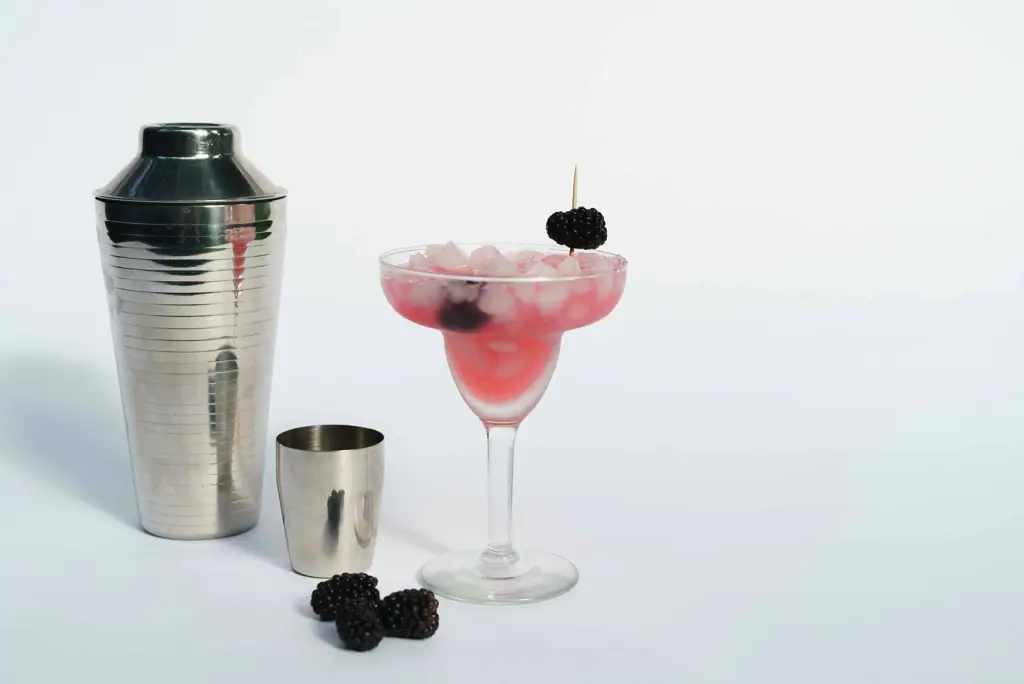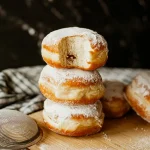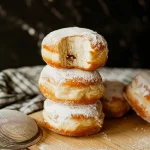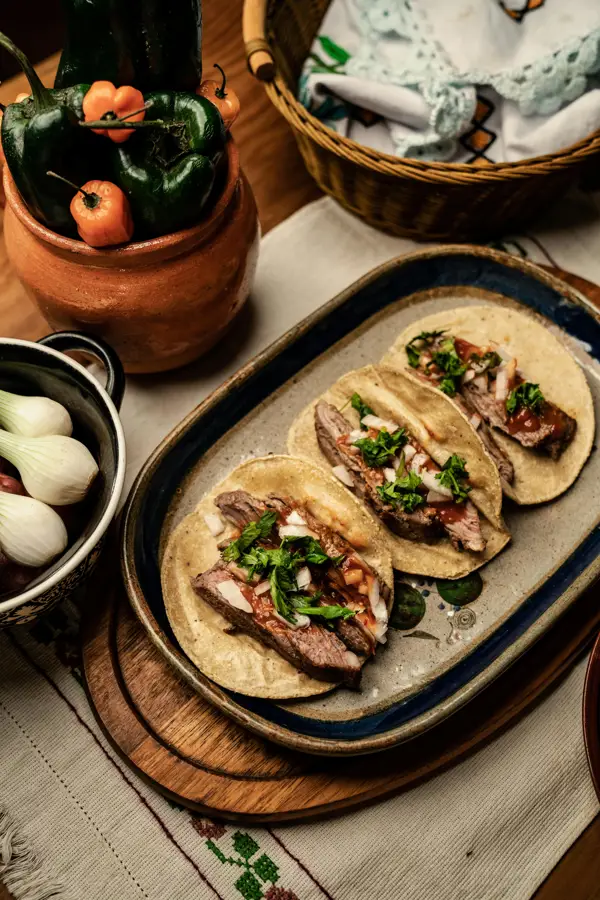The frozen margarita, a ubiquitous symbol of summertime relaxation and vibrant social gatherings, boasts a history far richer than its icy simplicity might suggest. While pinpointing its exact origin is difficult, the drink’s evolution is intrinsically linked to the rise of the blended cocktail in the mid-20th century. Many believe that the frozen margarita, as we know it, emerged in the 1970s in the United States, likely in Texas or California, regions with a strong Mexican-American culinary tradition and a burgeoning interest in blended drinks. This era saw the proliferation of powerful blenders, making the creation of this frosty concoction significantly easier and more accessible than its predecessor, the classic margarita.
The classic margarita itself, a simpler mix of tequila, lime juice, and orange liqueur, has a debated history. Some claim its origins lie in 1930s Mexico, possibly as a variation of a pre-existing cocktail. Others trace it to the 1940s, with variations of the story involving socialites and bartenders. Regardless of its exact birthdate, the margarita quickly gained popularity, paving the way for its frozen counterpart. The frozen margarita’s convenience and appealing texture propelled it to immense popularity, particularly in the United States. It became a staple in restaurants, bars, and homes, solidifying its place in American culture.
The cultural significance of the frozen margarita is undeniable. It’s become a potent symbol of celebration, relaxation, and the carefree spirit of warmer months. Its bright, vibrant color and refreshing taste evoke images of sunny beaches, poolside lounging, and casual socializing. Statistics show that the margarita, in both its frozen and classic forms, remains one of the most popular cocktails globally, with annual sales in the billions of dollars. The accessibility of the frozen version, particularly its ease of preparation at home, has contributed significantly to its popularity, allowing individuals to recreate the bar experience in the comfort of their own homes. Furthermore, the frozen margarita’s versatility allows for endless variations, from adding different fruits and liqueurs to experimenting with different types of tequila, ensuring its continued appeal to a wide range of palates.
Today, the frozen margarita stands as more than just a drink; it’s a cultural icon, representing an approachable luxury and a shared experience. Its evolution, from a relatively recent innovation to a widespread phenomenon, showcases the power of a simple yet perfectly balanced mix of flavors and textures. This recipe will guide you through crafting the perfect frozen margarita at home, allowing you to enjoy this iconic beverage’s refreshing taste and rich history.
Ingredients and Measurements
Crafting the perfect frozen margarita hinges on using high-quality ingredients and precise measurements. Don’t skimp on the quality; it will significantly impact the final taste. We’ll be making a classic margarita recipe, easily scalable for larger batches.
For this recipe, we’ll be using standard measurements. You can, of course, adjust the quantities to your liking, but remember that altering the ratios too drastically might affect the balance of flavors.
Tequila: The foundation of any good margarita is the tequila. We recommend using a good quality 100% agave tequila blanco (silver). Blanco tequilas have a cleaner, brighter flavor profile that won’t overpower the other ingredients. For this recipe, you’ll need 1 1/2 cups (355 ml) of tequila blanco. Avoid using cheaper, mixed tequilas, as they often contain additives that can negatively affect the taste of your margarita.
Lime Juice: Freshly squeezed lime juice is essential. Bottled lime juice simply won’t deliver the same vibrant, tart flavor. Use approximately 1 cup (240 ml) of freshly squeezed lime juice. This might require juicing around 8-10 limes, depending on their size. To get the most juice, roll the limes firmly on a countertop before cutting them.
Cointreau or Triple Sec: This adds a crucial layer of sweetness and orange complexity to balance the tartness of the lime and the bite of the tequila. We recommend using Cointreau, a premium orange liqueur, but a good quality Triple Sec will work as well. Use 3/4 cup (177 ml) of Cointreau or Triple Sec. Don’t substitute with other orange liqueurs, as the flavor profiles can vary significantly.
Ice: Lots of it! Use approximately 4 cups (950 ml) of ice, or enough to create a smooth, slushy consistency. Using crushed ice is recommended for a better blending experience and a smoother final product. If you don’t have a crusher, you can pulse ice cubes in a blender until finely crushed.
Simple Syrup (Optional): While not strictly necessary for a tart margarita, adding a simple syrup can help adjust the sweetness to your preference. A simple syrup is easily made by combining equal parts sugar and water and heating until dissolved. If using, add 1/4 cup (60 ml) of simple syrup, or adjust to taste. Start with less and add more as needed; it’s easier to add sweetness than to take it away.
Salt (for the rim, optional): A salted rim is a classic touch. To prepare, rub a lime wedge around the rim of your margarita glass and dip it into a shallow dish of coarse sea salt. The amount of salt is up to your preference, but a light dusting is usually sufficient.
Remember: Always measure your ingredients accurately for consistent results. Using a jigger or measuring cups will help ensure your margaritas are always perfectly balanced.
Preparation of Ingredients (e.g., juicing limes)
The success of a frozen margarita hinges significantly on the quality of your ingredients, particularly the lime juice. Freshly squeezed lime juice is paramount; bottled lime juice simply won’t deliver the same vibrant, zesty flavor. We’ll be using approximately 10-12 limes for a classic margarita recipe, yielding about ½ cup of fresh lime juice. Adjust the number of limes based on their size and juiciness. Smaller limes may require more.
Before you begin juicing, thoroughly wash your limes under cold running water. Scrub them gently to remove any dirt or pesticides. This is a crucial step in ensuring food safety and a cleaner, more flavorful margarita.
There are several methods for juicing limes, each with its own advantages and disadvantages. The most common method is using a manual citrus juicer. These are inexpensive and readily available. Simply cut the lime in half and firmly press each half onto the juicer’s cone, rotating it until all the juice is extracted. Avoid pressing too hard, as this can introduce bitter pith into the juice.
Alternatively, you can use an electric citrus juicer. These are faster and often yield a slightly higher juice output. Simply cut the lime in half and place each half, cut-side down, onto the juicer’s cone, and let the machine do the work. Clean your electric juicer immediately after use to prevent residue from drying and becoming difficult to remove.
For a more hands-on approach, you can juice the limes by hand. Cut each lime in half and, using a fork or your fingers, gently squeeze the juice into a bowl or measuring cup. This method requires more time and effort but allows for greater control over the juicing process. Be mindful of the seeds; try to avoid squeezing them into the juice as they can impart a slightly bitter flavor. If seeds do get into the juice, strain it through a fine-mesh sieve before using.
Regardless of the method you choose, strain the juice after juicing to remove any pulp or seeds. This will result in a smoother, more elegant margarita. A fine-mesh sieve or cheesecloth works perfectly for this purpose.
Once you’ve juiced your limes, measure the juice accurately. The recipe calls for approximately ½ cup (120ml) of fresh lime juice. Too little lime juice will result in a less tart, less flavorful margarita, while too much can make it overly sour. Accurate measurement is key to achieving the perfect balance.
Store your freshly squeezed lime juice in the refrigerator until you are ready to make your margaritas. Freshly squeezed lime juice will keep for up to 2-3 days in the refrigerator, although it is always best to use it as soon as possible for optimal flavor.
Mixing the Margarita (Blending Instructions)
Now that you’ve prepped your ingredients, it’s time to blend your frozen margarita to perfection. The key to a fantastic frozen margarita is achieving the right balance of ice, tequila, and other ingredients. Too much ice, and it’ll be watery; too little, and it’ll be icy and difficult to blend. Get ready for some frosty fun!
Start with the ice. This is crucial. Use good quality ice – ideally, clear ice made from filtered water for the best taste and texture. We recommend using approximately 4 cups of ice for a standard blender-sized batch (about 4 servings). Avoid using crushed ice, as it can result in a slushy, less desirable consistency. Instead, use large ice cubes or even ice spheres for a smoother, less grainy final product.
Next, add your liquids. For this recipe, we’ll use the following measurements: 1 1/2 cups tequila (good quality blanco tequila is recommended), 1 cup fresh lime juice (about 8-10 limes, depending on size), and 3/4 cup Cointreau or other quality orange liqueur. Ensure your lime juice is freshly squeezed; bottled lime juice will significantly impact the flavor of your margarita. The quality of your tequila and orange liqueur will also be noticeable, so don’t skimp on these ingredients.
Add your sweetener. We’ll use simple syrup for a clean, sweet flavor. You can adjust the amount to your preference, but a good starting point is 1/2 cup simple syrup (equal parts sugar and water, heated until dissolved). If you prefer a sweeter margarita, add up to 3/4 cup. Alternatively, you can use agave nectar for a slightly different flavor profile. Remember to taste and adjust as needed!
Blend it up! Add all the ingredients – ice, tequila, lime juice, orange liqueur, and simple syrup – to your blender. Secure the lid tightly. Start blending on a low speed to avoid splashing, then gradually increase to high speed. Blend until the mixture is completely smooth and frosty, scraping down the sides of the blender as needed. This may take 1-2 minutes depending on your blender’s power and the type of ice you’re using.
Taste and adjust. Once blended, taste your margarita. You may need to adjust the sweetness or tartness by adding a touch more simple syrup or lime juice, respectively. Remember, it’s always easier to add more than to take away! Start with small adjustments and taste again before adding more.
Serve immediately. Pour your delicious frozen margaritas into salt-rimmed glasses (optional, but highly recommended!) and garnish with a lime wedge. Serve immediately to prevent the ice from melting and diluting your drink. Enjoy responsibly!
Pro Tip: For a truly professional touch, consider using a high-powered blender specifically designed for frozen drinks. These blenders can crush ice more efficiently, resulting in a smoother, creamier texture.
Freezing the Margarita (if applicable, considerations for consistency)
Freezing a margarita directly impacts its texture and overall enjoyment. While some recipes call for partially freezing the margarita mixture before blending, others blend everything fresh. The choice depends on your desired consistency and equipment. Completely freezing the margarita is generally not recommended, as it can result in a texture that’s too icy and difficult to blend smoothly.
If you choose to partially freeze your margarita mixture, aim for a slushy consistency rather than solid ice. This will allow for easier blending and a creamier final product. A good starting point is to chill your margarita mixture thoroughly in the refrigerator for at least 2-3 hours before freezing. Then, pour the mixture into a shallow, freezer-safe container (a baking dish or several smaller containers work well). The shallower the container, the faster and more evenly the mixture will freeze.
For optimal freezing, aim for a thickness that allows you to easily scoop it out with a spoon or spatula. This usually takes between 1-3 hours, depending on your freezer’s temperature and the depth of the container. Regularly check the mixture’s consistency, as freezing times can vary greatly. You want it frozen enough to have a slightly icy texture, but not so hard that your blender struggles to process it.
Avoid over-freezing. If the mixture becomes completely solid, it will be challenging to achieve a smooth, drinkable consistency. You may need to let it thaw slightly before blending, which can lead to a watery margarita. If this happens, consider adding a small amount of ice to compensate for the dilution and achieve the desired texture.
The type of blender you use also plays a significant role. High-powered blenders, like Vitamix or Blendtec, are better equipped to handle partially frozen mixtures. They are more powerful and can easily break down ice crystals, resulting in a smoother, less icy margarita. If you’re using a less powerful blender, it’s best to avoid freezing the mixture entirely and blend everything fresh, ensuring all ingredients are thoroughly chilled beforehand.
Remember that the ratio of ice to liquid in your final margarita will influence the consistency. If you’re starting with a partially frozen mixture, you may need to adjust the amount of ice you add to the blender. Start with a small amount of ice and add more gradually until you achieve your desired consistency. This allows for better control and prevents the margarita from becoming too icy or watery.
Ultimately, achieving the perfect frozen margarita consistency is a matter of practice and experimentation. Don’t be afraid to adjust your freezing and blending techniques depending on your preferences and equipment. By paying attention to the freezing time and the texture of your partially frozen mixture, you can consistently create delicious, perfectly textured frozen margaritas.
Serving Suggestions (Garnish Ideas, Glass Type)
The presentation of your frozen margarita is just as crucial as its taste. Choosing the right glass and garnish elevates the drinking experience from casual to sophisticated. The classic choice is undoubtedly a salt-rimmed glass, but there’s room for creativity and personalization.
Glass Type: The ideal glass for a frozen margarita is a 12-16 ounce margarita glass, also known as a coupe or a rocks glass. These glasses are wide enough to showcase the beautiful icy texture of the drink and allow for ample sipping space. Avoid using tall, slender glasses as they can make the drink melt too quickly. For a more casual setting, a sturdy pint glass works well, too. Whatever glass you choose, ensure it’s thoroughly chilled before serving. Pre-chilling the glass will keep your margarita colder for longer, preventing unwanted dilution.
Salt Rim: The classic salt rim is essential for many. To create a perfect salt rim, simply moisten the rim of your chilled glass with a lime wedge or a dampened finger. Then, pour a generous amount of coarse kosher salt onto a small plate. Carefully press the rim of the glass into the salt, rotating it to ensure complete coverage. Avoid using fine table salt, as it can easily dissolve and create a less appealing rim. For a twist, try using colored sugars like pink Himalayan salt or chili-lime salt for a visually appealing and flavorful variation. For a more sophisticated touch, consider a sugar rim instead of salt. A simple sugar rim complements the sweetness of the margarita beautifully.
Garnish Ideas: The garnish is the finishing touch that elevates your margarita from good to great. A simple lime wedge is always a classic and refreshing choice. To make it more visually appealing, use a thin lime wheel or a lime ribbon. Simply use a vegetable peeler to create a long, thin strip of lime peel. For a more vibrant presentation, consider adding a few fresh mint leaves or a sprig of rosemary to the glass. These herbs complement the citrus notes of the margarita and add a touch of elegance. If you are feeling adventurous, try a dehydrated lime wheel, which adds a beautiful visual contrast and a subtle burst of concentrated lime flavor as it dissolves into the drink.
Quantities: For a single margarita, use approximately 1/2 to 3/4 of a lime for the salt rim and garnish. If using herbs, a small sprig of mint or a small sprig of rosemary is usually sufficient. Remember to adjust quantities according to the size of your glass and personal preference. A well-placed garnish adds visual appeal and enhances the overall experience, so don’t be afraid to experiment and find your perfect combination.
Professional Recommendation: Always present your margaritas in pristine glasses and with meticulously crafted garnishes. A well-presented drink reflects the care and attention you put into making it, enhancing the enjoyment for your guests. Consider the overall aesthetic – the color of the drink, the garnish, and the glass should complement each other harmoniously.
Tips and Tricks (for achieving optimal taste and texture)
Creating the perfect frozen margarita hinges on more than just blending the ingredients. Achieving that ideal balance of tartness, sweetness, and icy texture requires attention to detail and a few key techniques. This section will guide you towards margarita mastery.
Start with Quality Ingredients: This is paramount. Using fresh lime juice makes a world of difference compared to bottled juice. The vibrant acidity and fresh aroma are crucial to a truly superior margarita. For every margarita, aim for approximately 2-3 medium-sized limes, juiced freshly. Avoid using pre-made lime juice mixes, as they often contain added sugars and preservatives that can negatively impact the overall flavor profile.
Balance the Sweet and Tart: The ratio of tequila, lime juice, and orange liqueur (like Cointreau or Triple Sec) is key. A good starting point is a 2:1:1 ratio (e.g., 2 oz tequila, 1 oz lime juice, 1 oz orange liqueur). However, adjust this to your personal preference. If you prefer a sweeter margarita, add a touch more orange liqueur or a small amount of simple syrup (1/2 ounce to 1 ounce, depending on your sweetness preference). For a tarter margarita, increase the lime juice slightly. Taste as you go! This is the best way to fine-tune the flavor to your liking.
Ice, Ice, Baby: The type of ice you use significantly impacts the texture of your frozen margarita. Use good quality ice – ideally, ice made from filtered water. Cloudy ice can dilute your drink and impart an off-flavor. For a smoother texture, use crushed ice rather than cubes. If you don’t have a quality ice crusher, you can achieve a similar effect by blending ice cubes in your blender for a short time before adding the other ingredients. Avoid over-blending the ice, as this can create a slushy consistency rather than a smooth, creamy texture.
Salt Rim (Optional, But Recommended): A salted rim adds a delightful textural and flavor contrast to the margarita. To create a perfect salt rim, rub a lime wedge around the rim of your glass, then dip the rim into a shallow dish filled with coarse kosher salt. Don’t use table salt, as it’s too fine and won’t adhere as well. A good quality coarse salt will provide a more appealing texture and flavor.
Chill Your Ingredients: Chilling your tequila, lime juice, and orange liqueur before blending will help keep your margarita colder for longer and prevent excessive dilution from melting ice. This is especially important if you are making a large batch.
Blend to Perfection: Blend your ingredients until completely smooth and frosty. Avoid over-blending, which can cause the ice to become too finely pulverized, resulting in a watery consistency. Start with short bursts of blending, and stop to check the consistency before continuing. A good frozen margarita should have a smooth, almost creamy texture, with just the right amount of ice crystals.
Garnish Appropriately: A simple lime wedge is a classic and elegant garnish. However, you can also get creative with other garnishes like a sugared rim, a chili-salt rim, or even a sprig of mint. The garnish should complement the flavor profile of your margarita without overpowering it.
Recommendations for Your Perfect Frozen Margarita
To elevate your frozen margarita experience, consider these recommendations. Proper chilling of your ingredients is paramount. Using ice-cold tequila, lime juice, and even pre-chilled salt for rimming the glass will drastically improve the drink’s final temperature and prevent excessive dilution. Experiment with different types of tequila – blanco tequilas tend to offer a cleaner, brighter flavor profile, while reposados add a subtle oakiness. Don’t be afraid to adjust the sweetness to your preference; a simple syrup allows for precise control over the sugar content.
Regarding the ice, quality matters significantly. Using crushed ice as opposed to whole cubes will yield a smoother, less icy texture. For a truly professional finish, consider using a blender specifically designed for frozen drinks, ensuring even blending and a consistent slushy texture. If you don’t have a blender powerful enough, consider adding a small amount of water (1-2 tablespoons) to aid the blending process. Over-blending can lead to a watery or melted drink, so blend until smooth but not completely liquid.
Serving suggestions are crucial to the overall enjoyment. Serve your margaritas immediately in a salt-rimmed glass, preferably a chilled one. Garnish with a lime wedge or a sprig of fresh mint for a visually appealing and aromatic touch. Consider adding a few frozen raspberries or blueberries to the blender for a beautiful color and subtle fruity flavor. For a more sophisticated presentation, use a margarita glass and carefully layer the margarita, perhaps adding a splash of Grand Marnier or Cointreau for an extra layer of complexity.
Storage is key to maintaining freshness. Leftover margaritas should be stored in an airtight container in the freezer. However, it’s best to consume your margaritas immediately after preparation as the ice crystals may become larger and the drink may lose its texture upon freezing and thawing. It is generally not recommended to store margaritas for extended periods due to potential changes in flavor and texture.
Complementary dishes are a key component of the overall dining experience. The tartness and refreshing qualities of the margarita pair beautifully with spicy Mexican cuisine. Consider serving it alongside dishes like tacos al pastor, fish tacos, quesadillas, or even a flavorful guacamole and chips. The saltiness of the rim also complements the richness of dishes like grilled shrimp or chicken fajitas. For a lighter option, a fresh salad with a citrus vinaigrette can be a wonderful complement to the drink’s bright flavors.
Nutritional Information (per serving, approximate values will vary based on specific ingredients and measurements): Calories: 250-350, Fat: 0g, Saturated Fat: 0g, Cholesterol: 0mg, Sodium: (varies depending on salt used), Carbohydrates: 20-30g, Sugar: 15-25g, Protein: 0g. Note: These values are estimates and can vary greatly depending on the specific ingredients and quantities used. Alcohol content will also contribute significantly to the overall calorie count.





